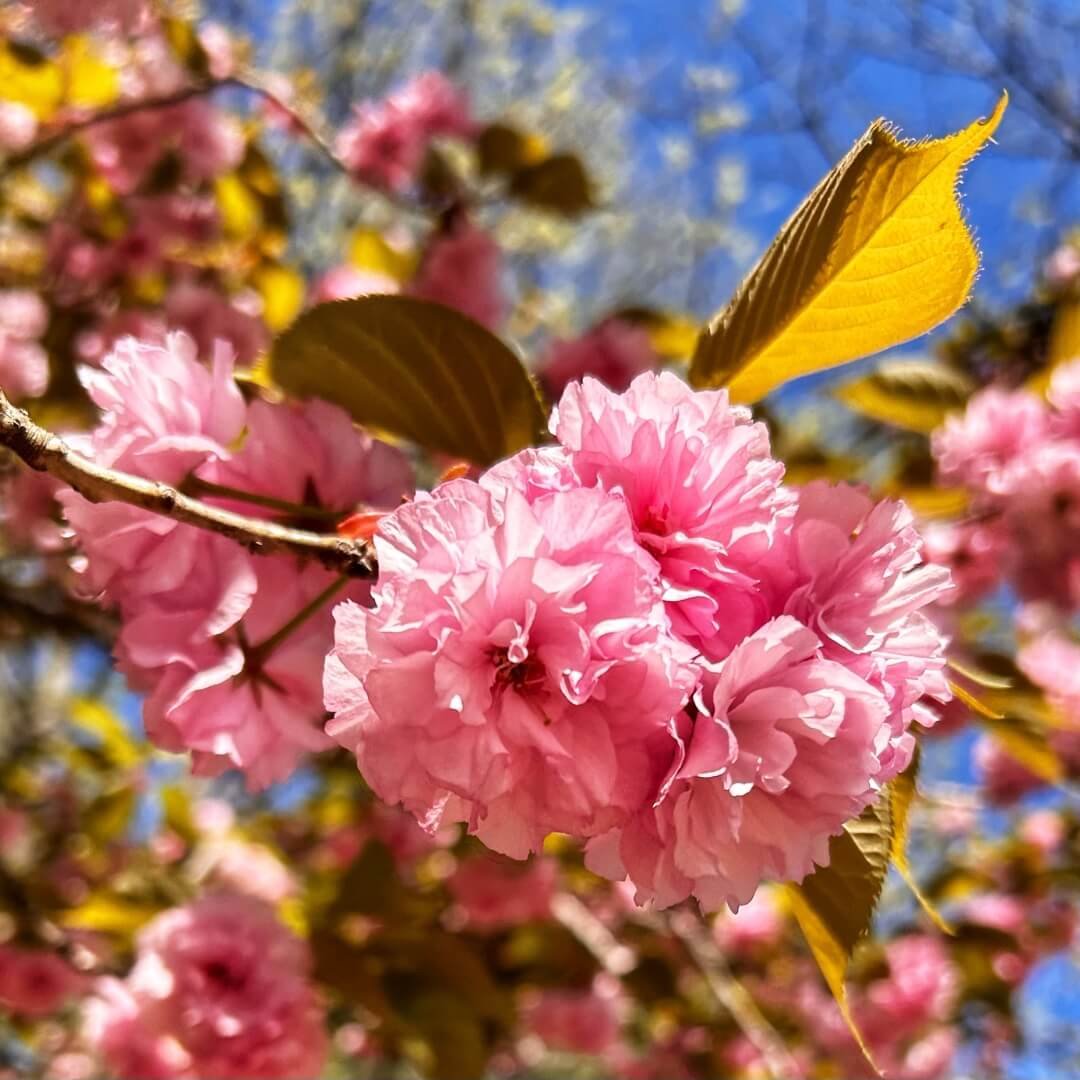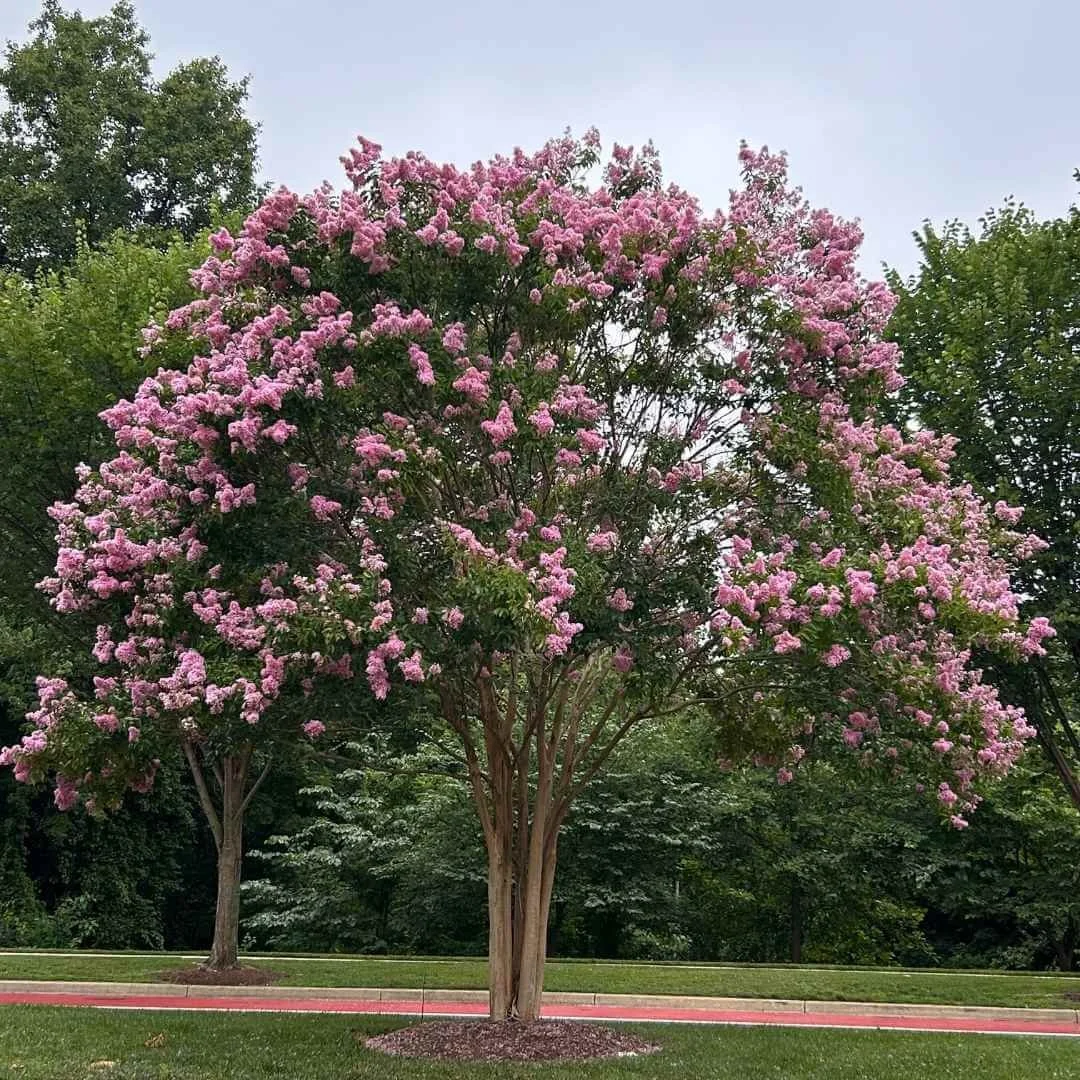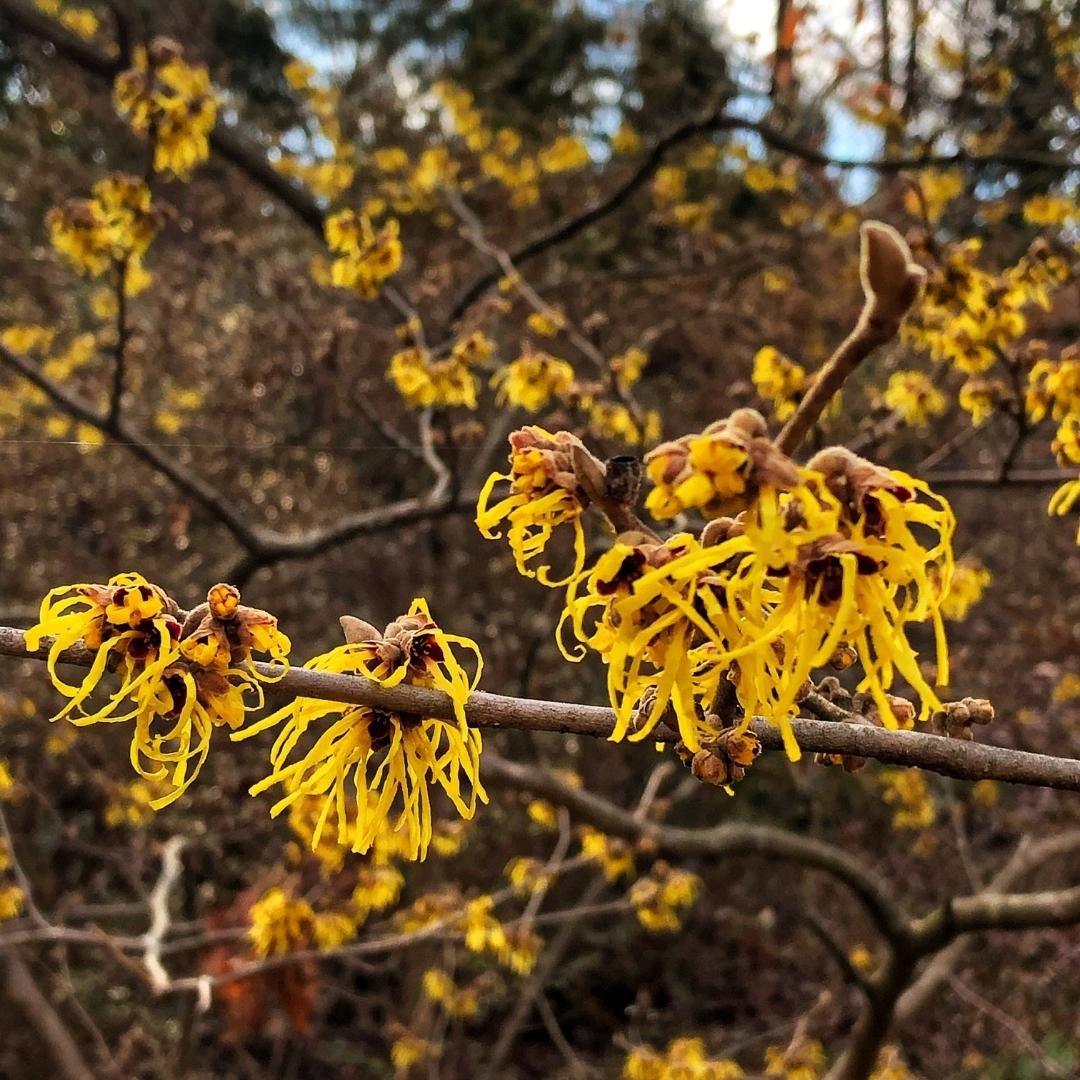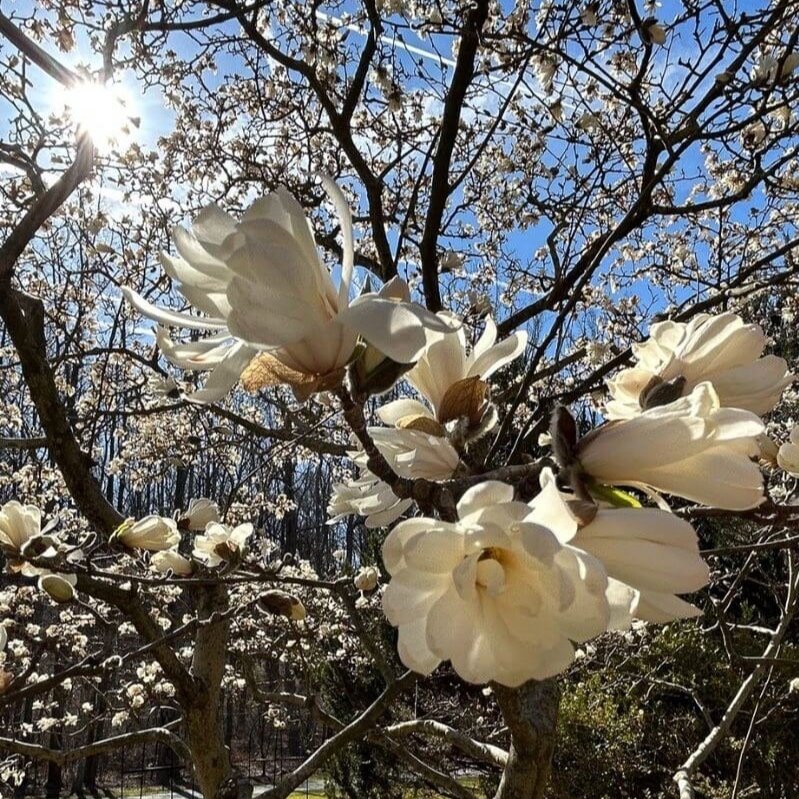Discover the Beauty of the Kwanzan Cherry Tree
Dreamy Clouds of Double Pink Flowers
This post contains affiliate links, marked with an asterisk (*). If you click the link, I may receive a small commission at no extra cost to you - please see my policy on affiliate links. Thank you for supporting this blog!
The Kwanzan cherry tree (Prunus serrulata ‘Kanzan’) is a popular spring blooming tree in mid-Atlantic landscapes. Tourists flock to Washington D.C. every year to see the iconic Kwanzan cherry trees planted around the Tidal Basin, where they are celebrated with parades, festivals, poetry and art.
They are a sight to behold, with double-blooming, lightly fragrant, deep pink flowers that cover each branch, coming about two weeks after the lighter pink Yoshino cherries.
Photo credit: Zayn Shah via Unsplash
Kwanzan cherry trees are the most popular and widely used cultivar of Prunus serrulata, frequently planted in larger landscapes like parks and public areas in zones 5-9.
This tree can be used as a street tree, or planted in the home landscape as a specimen. As with all ornamental cherries, Kwanzan cherry trees tend to be relatively short-lived (15-25 years), and are susceptible to numerous insect pests and diseases.
Kwanzan cherry trees are deer-resistant, rated as '“seldom severely damaged” by Rutgers University in their List of Landscape Plants Rated by Deer Resistance.
Give Kwanzan cherries full sun and evenly moist, fertile, well-drained soil. Best flowering occurs in full sun. Flowering coincides with the emergence of bronze-colored simple leaves with serrated edges, which mature to a deep, lustrous green by summertime.
These trees are sterile and do not produce fruit - only leaves and flowers, and therefore have low wildlife value. If you would like to plant a cherry tree that supports your neighborhood pollinator and bird populations, the Yoshino cherry tree is a better choice.
Kwanzan cherries put on another show in autumn when leaves turn stunning shades of yellow, bronze and orange. Read on and discover how to grow and care for this beautiful flowering cherry tree.
How to Plant and Grow the Kwanzan Cherry Tree
Kwanzan Cherry (Prunus serrulata '‘Kanzan’) planted as a street tree.
Planting and growing a Kwanzan cherry tree involves several key steps to ensure successful establishment and development:
Location: Choose a planting site with full sun (6+ hours of sunlight per day) and moist, fertile, well-drained soil. Kwanzan cherry trees will tolerate light shade as well as clay or sandy soil.
Planting Time: The best time of year to plant a Kwanzan cherry tree is in spring or fall, allowing the roots to establish before the onset of extreme hot or cold weather. Water the tree deeply after planting.
Watering: Provide regular watering, especially during dry spells, to keep the soil consistently moist but not waterlogged. Water at the base of the tree to avoid wetting the foliage. To promote optimal growth and flowering, consistent moisture is best for a Kwanzan cherry tree. For more information on watering, see “How to Water a Tree'“.
Mulching: Apply a layer of mulch around the base of the tree to help retain moisture, suppress weeds, and regulate soil temperature.
Fertilizing and Pruning: Cherry trees are light feeders, preferring a low-nitrogen fertilizer applied in early spring, 2-3 weeks before blooming. Over-fertilization can cause disease and insect problems. Prune trees in the spring, when flowering has finished. To ensure the long-term health and resilience of your Kwanzan cherry tree, it's advisable to establish a routine of hiring an arborist who can expertly handle fertilization and pruning, provide proactive care, and address potential issues promptly.
Be Vigilant: Kwanzan cherry trees are subject to numerous problems caused by insects, disease, and weather extremes. Regularly inspect your tree, looking for changes in leaf color, spots, abnormalities, or signs of insect activity. A proactive approach to tree care can help to prevent problems from escalating, and will contribute to the long-term health and well-being of your tree.
How Big Does a Kwanzan Cherry Tree Get?
Give a Kwanzan cherry tree some space - it will eventually reach 25-30 feet in height and width. Young trees are vase shaped and will take on a wide, rounded shape as they grow, making them an excellent shade tree.
Be sure to plant Kwanzan cherries at least 15 feet away from buildings and other structures to accommodate their future wide, spreading shape. Young Kwanzan cherry trees have a moderate growth rate, adding 1-2 feet of height each year.
Trees sold at nurseries may be grafted, smaller plants that stay below 10 feet tall - check labels and know what you are getting yourself into! Kwanzan cherry trees are short-lived trees (15-25 years).
Consistent moisture is crucial for the optimal growth of a Kwanzan cherry. Adequate water intake supports the tree's overall health and contributes to a faster growth rate.
During the growing season, it's essential to ensure that the soil around the Kwanzan cherry tree remains consistently moist, avoiding both prolonged drought stress and waterlogging (are you in a drought? Check the US Drought Monitor).
The Kwanzan cherry tree has deep pink, lightly fragrant double flowers.
Are Kwanzan Cherry Trees Hard to Grow?
Kwanzan cherry trees are generally easy to grow, thriving when planted in a suitable location with full sun and well-draining soil.
However, it's crucial to distinguish between their ease of growth and their relatively short lifespan.
The Kwanzan cherry tree is relatively short-lived, typically having a lifespan of 15 to 25 years. Factors influencing their lifespan include insect pests, disease susceptibility, and weather extremes.
Despite their ephemeral nature, the intense beauty they bring during their blooming season makes them a cherished addition to gardens and landscapes.
To compensate for their shorter lifespan, ensure these trees receive optimal care. Consider regular checks by a certified arborist, who can inspect your tree and recommend pruning, fertilizing, and other proactive measures.
If you would prefer a longer-lived, lower-maintenance spring flowering tree, consider these alternatives to the Kwanzan cherry tree:
Okame Cherry Tree (Prunus x incam): A flowering cherry tree with a longer lifespan and greater tolerance for heat (learn more here).
Autumn Brilliance Serviceberry (Amelanchier x grandiflora ‘Autumn Brilliance’): Lacy white spring flowers, edible purple fruits, and brilliant red fall color. Grows 15-25 feet tall and wide.
The Little Girl Magnolias (Magnolia ‘Ann’, Magnolia ‘Jane’, and others): The Little Girl magnolias are a group of small, spring-flowering trees developed to avoid frost damage (learn more here).
Eastern Redbud (Cercis canadensis): A small deciduous tree with purple-pink springtime flowers and heart shaped leaves (learn more here).
White Fringetree (Chionanthus virginicus): A small, low-maintenance tree with soft white flowers blooming in mid-to late spring (learn more here).
The bark of a Kwanzan cherry tree (Prunus serrulata '‘Kanzan’) is reddish-brown to grayish-brown, and has has prominent horizontal pores called lenticels.
Are Kwanzan Cherry Trees Toxic to Dogs?
Kwanzan cherry trees are toxic to both people and animals, including dogs and horses. These trees are sterile and do not produce any fruit, however the leaves and stems contain the poison cyanide. Wilted cherry leaves are particularly potent.
If you suspect your dog, horse, or other pet has ingested any part of a Kwanzan cherry tree or is showing signs of illness, such as vomiting, difficulty breathing, or lethargy, it's crucial to contact your veterinarian immediately.
Learn more about which common indoor and outdoor plants are toxic to dogs here.
When Do Kwanzan Cherry Trees Bloom?
Kwanzan cherry trees are known for their beautiful, double-pink blossoms which emerge in the spring. In general, they tend to flower in late April to early May, depending on the geographical location.
Weather variations from year to year can influence the precise timing of cherry blossoms. Kwanzan cherry trees bloom roughly 2 weeks after the Yoshino cherry.
Find a Tree for Your Landscape:


























This stately, deciduous conifer thrives in zones 4-9.